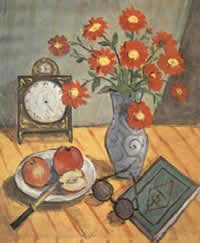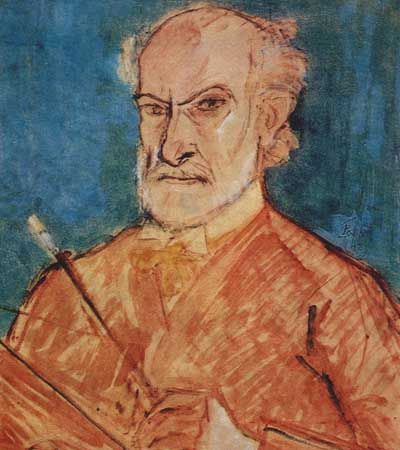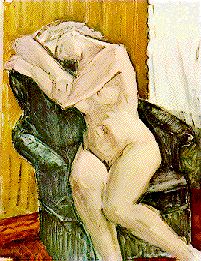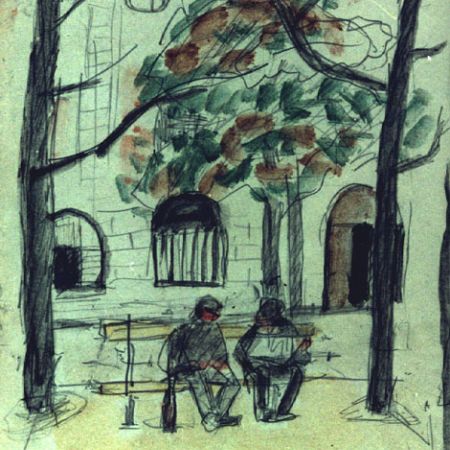Theodor Pallady (1871, Iasi-1956, Bucharest) Romanian painter. From 1887 to 1889 he studied at the Polytechnic of Dresden. At that time Erwin Oehme was the person who realised, while teaching him lessons of drawing and painting, the special artistic gift he had. Oehme was straight in his recommendation that he must go to Paris. In Paris, Pallady was first to practice (1889-1891) at Armand Jean's studio, then to enter the Ecole des Beaux-Arts. In 1892 he was present at Gustave Moreau's studio, where Matisse, Rouault, Manguin, Camoin, Jean Puy made also their apprenticeship. In 1897 Moreau died and Pallady moved to Morot's and Fernand Cormont's studio, while being also an apprentice to Puvis de Chavannes. In 1904 he would return home to show his works at the official salons held at the Romanian Athenaeum. So far as 1940 his presence in Paris with personal exhibitions on show was a customary doing. He was among the artists present at the Venice Biennial for three editions: 1924, 1940, 1942. A vast instruction and experience of the kind he had succeeded to acquire- the German school strict rules, the Symbolism initiated by Moreau, the experiments of the Art Nouveau (see the 1900 Style) and of those of his fellow-painters who were going to found Fauvism - could not help Pallady taking his own way. Close to Matisse and the congeniality with the French art, better said, with what was to be called the "Ecole de Paris" were the two main elements keeping Pallady in good touch with reality, thus revealing the fact that he was deeply fond of classical composition, of what made essence and eternity under the veil of appearances. His own words "I 'm not a modern man, I'm a man of all times" highlighted his creation which at once closely examined the reality and shun from any accidental or partial reference of it. Colours and perspective helped the artist maintain the unity and the continuity of image and realise a conventional two-dimension representation of it. He created for eternity because, deep in his heart, he was a classical spirit in love with order, moderation and rationality. His high sensibility and aptitude for spiritual reclusion detached him from the post-impressionistic lyricism and especially from the overemotionality of the Fauves, including Matisse. Reality - so obstinately present with Bonnard or Marquet or the Ecole de Paris in general- is left behind, to enter the realm of philosophical meditation, where classical values are the supreme ones. Such opposition tells about the spirit of the Romanian folk art, which embeds the people's spiritual creation, illustrated by the mediaeval miniatures and frescoes. His art is also telling of the folklore, the Byzantine sources and the anthropocentric cult. The freshness and brightness of tones in painting, and the graphical elements in drawing are subject to a composition of strict rules. Not in the least would the painter accept that a segment, no matter its colour richness, destroyed the harmony of the whole. The nudes, the still life pictures, those showing flowers and landscapes, the portraits and the self-portraits are all images due to a keen eye on the surrounding world, to become a mood which the viewer is invited to understand. Such demanding sensibility and rationality makes Pallady be one of the most famous modern artists, with all his ambition of an artist of "all the times". |





































